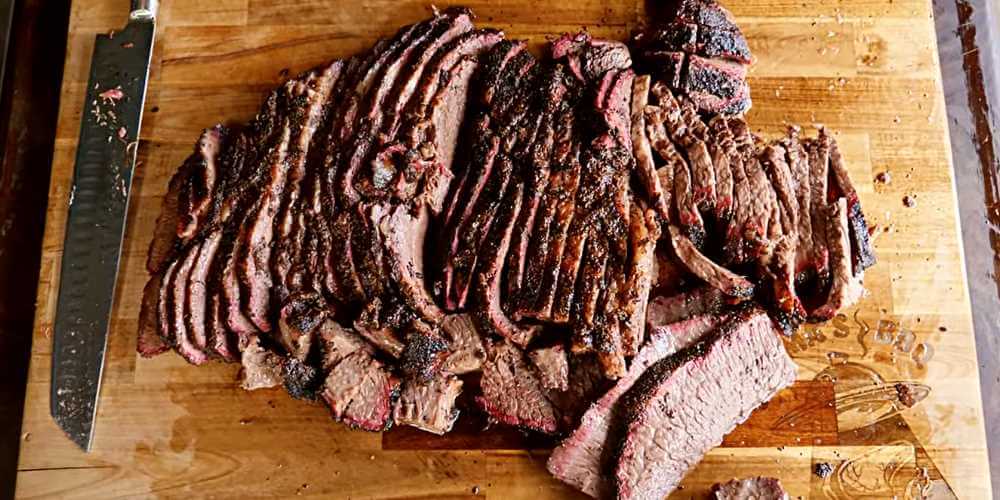
John Andrew
John Andrew, owner of The Meat Inn Place in Lilydale, boasts a legacy of butchery, offering exclusive grass-fed and free-range meats, and specialising in low-and-slow cuts. With a career inspired by his father, John’s passion and expertise have nurtured a reputable business distinguished by unique offerings like Kiwami Wagyu, driven by a commitment to quality and community service.
The Difference Between Kobe and Wagyu—Which One is Better?
Reading Time: 8 minutes and 37 seconds

Many customers walk into The Meat Inn Place and ask me the same question: “What’s the difference between Kobe and Wagyu, and which one is better?” I can’t blame them—these names get thrown around a lot, often without the full story.
Here’s the truth: All Kobe is Wagyu, but not all Wagyu is Kobe. While both are prized for their incredible marbling and tenderness, their differences go beyond just a name. Understanding what sets them apart—from their origins to their grading and flavour—can help you decide which one deserves a spot on your plate. So, let’s break it down and finally answer the big question: Which one is better?
The Difference Between Kobe and Wagyu
The biggest difference between Kobe and Wagyu is classification. Wagyu refers to four specific breeds of Japanese cattle known for their exceptional marbling and rich, buttery texture. Kobe, on the other hand, is a specific type of Wagyu beef that meets strict regional and quality standards in Hyogo Prefecture, Japan.
Think of it this way:
- Wagyu is the broader category, similar to how Champagne is a type of sparkling wine.
- Kobe is a premium subset of Wagyu, comparable to how true Champagne can only come from France’s Champagne region.
Breaking It Down: Key Differences
| Wagyu Beef | Kobe Beef | |
| Definition | General term for four Japanese cattle breeds | A specific type of Wagyu from Hyogo Prefecture |
| Breed | Japanese Black, Japanese Brown, Japanese Shorthorn, Japanese Polled | Only Tajima-strain Japanese Black |
| Marbling | High marbling, varies by breed & grade | Highest marbling, ultra-buttery texture |
| Grading System | A1–A5 (A5 is the best) | Must be A4 or A5 with BMS 6+ |
| Exclusivity | Premium beef, available worldwide | Extremely rare, only ~3,000 certified cattle annually |
| Price | Expensive, but more widely available | More expensive due to limited supply |
| Availability | Produced in Japan, Australia & USA | Authentic Kobe is only from Japan |
What is Wagyu Beef?
Wagyu (和牛) means “Japanese cow,” but not all Japanese beef qualifies. True Wagyu comes from four specific breeds selectively bred for exceptional marbling, rich flavour, and melt-in-your-mouth texture. This fine streaking of fat throughout the meat gives Wagyu its unmatched tenderness and umami depth. Beyond its indulgent taste, Wagyu is also high in monounsaturated fats and omega-3s, making it as nutritious as it is luxurious.
The Four Wagyu Breeds
Wagyu comes from four specific breeds of Japanese cattle, each offering unique characteristics:
- Japanese Black (Kuroge Washu) – The most common breed, making up 90% of all Wagyu. It’s famous for high marbling and superior tenderness.
- Japanese Brown (Akage Washu) – Also called Kumamoto Wagyu, this breed has less fat but a richer beef flavour.
- Japanese Shorthorn (Nihon Tankaku Washu) – Leaner than other Wagyu, but rich in umami and savoury taste.
- Japanese Polled (Mukaku Washu) – The rarest breed, producing deep-flavoured, firmer-textured beef.
Wagyu Grading System: What is A5 Wagyu?
Wagyu beef is graded based on yield and quality using a strict Japanese grading system:
- Yield Score (A, B, C) – Measures how much meat can be harvested. A = highest.
- Quality Score (1–5) – Based on marbling, colour, texture, and fat quality.
- Beef Marbling Score (BMS 1–12) – Higher BMS = more marbling.
A5 Wagyu (A-grade yield + 5-star quality) is the highest possible ranking, offering unmatched marbling, tenderness, and rich umami flavour.
Can you buy Wagyu outside of Japan?
While true Wagyu originates from Japan, breeding programs in Australia and the USA have developed crossbred Wagyu, often mixed with Angus cattle to balance marbling and cost.
💡A Butcher’s Tip: For the best experience, look for 100% Fullblood Wagyu rather than crossbreeds.
What is Kobe Beef?
Kobe beef is one of the most sought-after and exclusive types of Wagyu in the world, known for its unparalleled marbling, rich flavour, and melt-in-your-mouth texture. But not every highly marbled steak can be called Kobe—it must meet some of the strictest beef standards in the industry.
Strict Standards for Kobe Certification
For beef to be officially certified as Kobe, it must meet all of these requirements:
✔ Come from Tajima-strain Japanese Black cattle
✔ Be born, raised, and slaughtered in Hyogo Prefecture, Japan
✔ Achieve a BMS of 6+ and an A4 or A5 grade
✔ Weigh no more than 499.9 kg
Only about 3,000 cattle per year are certified as authentic Kobe beef, making it one of the rarest and most prestigious meats in the world. In total, approximately 5,500 Tajima cattle are processed annually, but only a portion meet the strict criteria, producing around 1,320 tons of certified Kobe beef each year.
Why is Kobe Beef So Expensive?
Kobe beef is one of the most coveted and expensive meats in the world, and for good reason. Unlike other premium beef, Kobe isn’t just about marbling—it’s about rarity, craftsmanship, and prestige. Here’s why this elite Wagyu variety comes with such a hefty price tag:
- Limited Production: Only a small percentage of Tajima-strain Japanese Black cattle from Hyogo Prefecture qualify as Kobe beef each year.
- Strict Certification Standards: Each Kobe cow is meticulously raised for over 30 months, fed a special diet of rice straw, corn, and barley, and cared for under precise conditions. These regulations add time and cost, but they also ensure that only the best cuts make it to market.
- High Global Demand: The demand is so high that real Kobe is rarely exported, making it incredibly difficult to find outside Japan. Even within Japan, only a select number of butchers and restaurants are licensed to sell it.
How much does Kobe beef cost?
Kobe beef doesn’t come cheap, and for good reason. In Japan, top-grade A5 Kobe can go for over AUD 600 per kilo, but once it’s exported, the price skyrockets—hitting AUD 800 to 1,000 per kilo in places like Australia and the US. At high-end restaurants, a single Kobe steak can set you back AUD 200 to 500, and that’s if you can even find the real deal. With such strict certification and limited supply, authentic Kobe is a rare indulgence, and its price reflects that.
How to Cook Kobe and Wagyu Beef for the Best Experience
I’ve seen plenty of people ruin a perfectly good Wagyu or Kobe steak by cooking it like an ordinary cut of beef. Don’t make that mistake. When you’re working with some of the best beef in the world, you need to treat it right.
Here’s how I tell my customers to cook Wagyu and Kobe for the best results:
✔ Let it sit at room temperature before cooking—cold meat won’t cook evenly, and you’ll end up with an underdone centre.
✔ Use medium or low heat—trust me, this beef doesn’t need a roaring hot pan. Wagyu fat melts at a lower temperature than regular beef, so give it time to render.
✔ Keep the seasoning simple—a bit of salt and cracked black pepper is all you need. Anything more, and you’re drowning out that buttery richness.
✔ Let it rest—I know it’s tempting to cut in right away, but let it sit for at least five minutes so the juices don’t run out.
💡A Butcher’s Tip: Want the perfect bite? Cook it to medium rare—any more and you’ll start losing that melt-in-your-mouth texture.

FAQ
Authentic Kobe beef is incredibly rare outside Japan due to strict certification and export regulations. While some high-end restaurants in Australia may offer it, most “Kobe-style” beef sold here is actually premium Wagyu, not true Kobe. That said, Australian Fullblood Wagyu is an excellent alternative, offering exceptional marbling, tenderness, and rich flavour similar to Kobe.
The secret to Wagyu’s incredible tenderness lies in its intramuscular fat, or marbling. Unlike standard beef, Wagyu cattle naturally develop fine streaks of fat throughout the muscle, not just around it. This fat has a low melting point, meaning that when cooked, it melts into the meat, creating a rich, buttery texture that’s unlike any other steak.
Compared to regular beef, A5 Wagyu has up to three times more marbling, making it one of the most tender, flavourful, and luxurious meats in the world.
Despite their higher fat content, Wagyu and Kobe beef offer surprising health benefits. Their fat is rich in monounsaturated fats, which can help lower bad cholesterol (LDL) and raise good cholesterol (HDL). They also contain omega-3 and omega-6 fatty acids, known for reducing inflammation and supporting heart health.
Wagyu is also a great source of conjugated linoleic acid (CLA), which may help reduce the risk of heart disease, cancer, and Alzheimer’s. Plus, its low melting point makes the fat easier to digest, giving Wagyu its signature silky texture.
Which One is Better—Kobe or Wagyu?
It all comes down to what you’re after in a steak.
If you’re looking for the ultimate indulgence, Kobe beef is in a league of its own. With unrivalled marbling, melt-in-your-mouth texture, and strict certification standards, it’s the pinnacle of luxury beef. But it’s also rare and comes with a premium price tag.
On the other hand, Wagyu offers incredible quality with more variety and accessibility. Whether it’s A5 Japanese Wagyu or premium Australian Wagyu, you’re still getting buttery tenderness and rich, beefy flavour, often at a more reasonable price.
As a butcher, I can tell you that both are among the finest beef in the world—the real question is, what kind of steak experience do you want?
Not sure which one to try? Come by The Meat Inn Place and let’s talk beef! Whether you’re after a show-stopping Kobe steak or a beautifully marbled Wagyu cut, we’ll help you find the perfect piece for your next meal.

